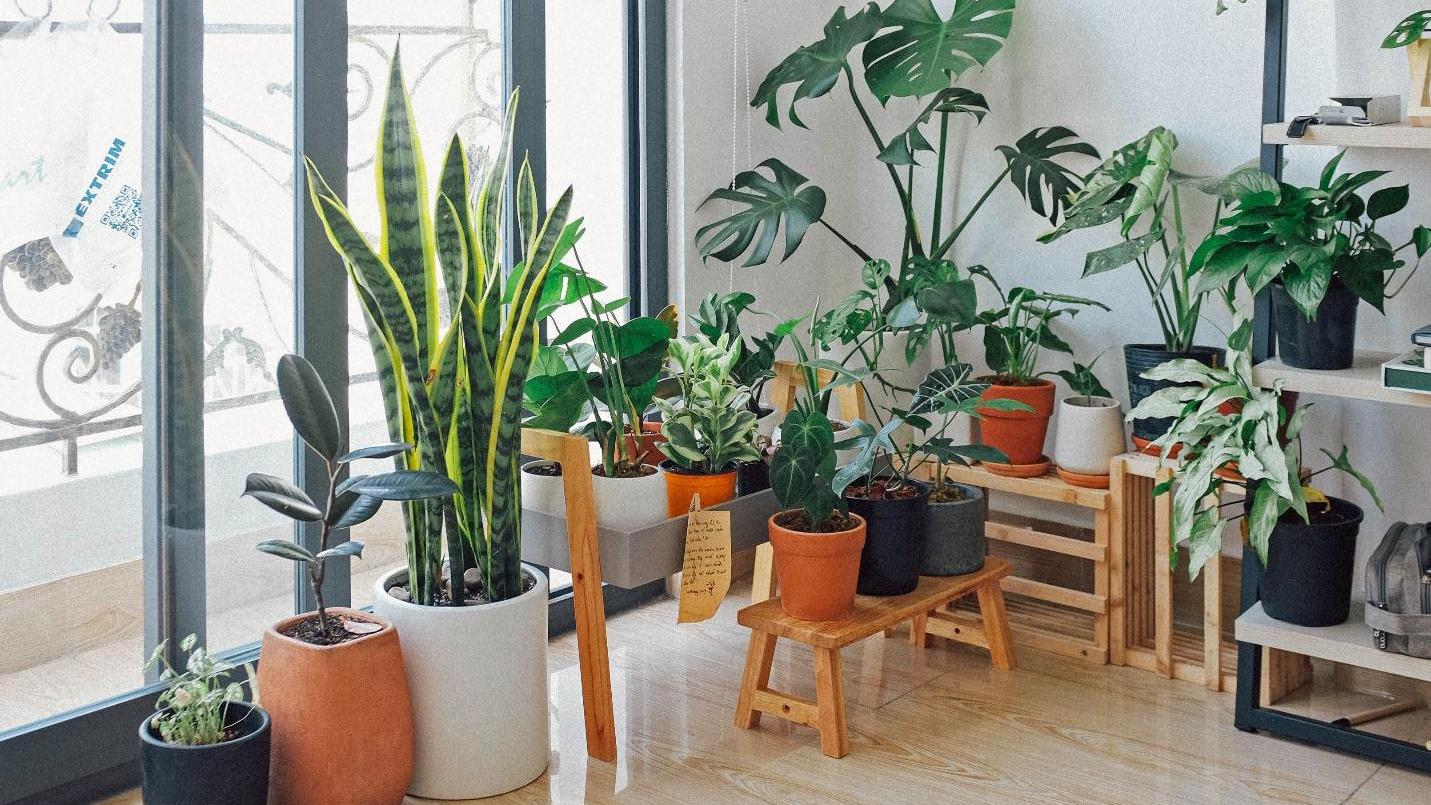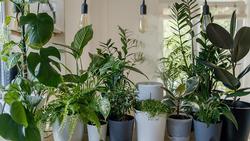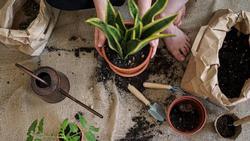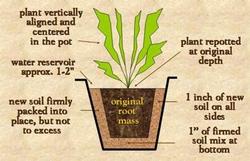Houseplant Care

Plants growing indoors need some specialized care. While they don’t face the weather extremes that outdoor plants do, they do have to deal with challenges of light, humidity, ventilation, and limited soil. Excesses or deficiencies of any one of these factors can prevent a plant from growing well indoors. Proper care of houseplants can help them thrive, not just survive.
The most important things for maintaining healthy indoor plants are:
> Light
> Temperature
> Relative humidity
> Watering
> Fertilizing
> Grooming
> Repotting
> Problems
Light
Indoor plants are often classified according to their light needs — high, medium, or low light requirements. The three important aspects of indoor light are intensity, duration, and quality. Each one has a different impact on the plant.
Here's information about evaluating your indoor light levels.
Temperature
Most indoor plants do best with daytime temperatures between 70 to 80°F and 65 to 70°F at night.
Avoid temperature extremes. Sensitive to drafts or heat from registers, protect them from sudden, brief changes in temperature.
Avoid drafts and heat. Don’t locate plants near heat or air conditioning sources.
Relative humidity

Use a humidity tray - Place pots on a tray filled with pebbles and water to increase humidity in the area around the plants.
Grouping plants together helps raise humidity.
Mist plants occasionally - Fill a spray bottle with distilled water and mist the plants to give them extra moisture.
Watering
How you water your houseplants depends on a lot of factors, including the plant species, potting media, season of the year, and environmental conditions in the growing area.
Avoid overwatering. Applying too much water can suffocate plant roots and too little water causes growth to become erratic and stunted.
Let topmost soil dry out. With most plants, it's best to let the upper inch of soil dry between waterings. Plants should not be watered on a schedule, but when they need it. When your plant does need water, make sure to water it thoroughly.
Apply room-temperature water until it runs out of the bottom of the pot.
Keep their feet dry. Don’t let the pot stand in water.
If possible, use bottled drinking water to avoid salt build-up.
Give them a periodic deep drenching. If you do use tap water, drench plants periodically. Take the plants to the sink or bathtub and add water to the potting mix until it comes out the bottom of the pot.
Fertilizing
The goal of fertilizing indoor plants is to add just enough nutrients so that the new growth compensates for leaf loss.
Avoid overfertilizing. Too much fertilizer results in the buildup of salts and excessive, leggy growth. The white residue around the outside of old clay pots is fertilizer salt.
Micronutrients are deficient in many indoor plants, so replace them once a year.
Monthly applications of a diluted liquid fertilizer in the summer months will keep most plants healthy.
Don’t fertilize during the winter months, indoor plants don’t need fertilizer because reduced light and temperature result in reduced growth.
Grooming
Keep your plants clean and neat; not only are they more attractive, but it helps reduce insect and disease problems.
Give them a wash. Wash leaves with warm water to remove dust.
Keep them tidy. Remove all spent flowers, dying or yellowing leaves, and dead branches.
Trim off leaf tips using sharp scissors if they are dry or brown.
Repotting

When to repot: It’s time to repot if you see the roots of a foliage plant growing out of the drain hole. Late winter and spring are the best time to repot plants.

• Choose a pot that has drainage holes in the bottom.
• The diameter of the new pot should be only two inches larger than the current pot.
• Clean the pot you will be using:
- Scrub soluble salts off with water and a brush.
- Wash the entire pot in a solution of one-part liquid bleach to nine parts water.
- Allow the pot to dry thoroughly before placing the plant into it.
• Purchase a sterile potting medium and moisten the necessary amount ahead of time.
• Water the plant well the day before repotting to reduce possible shock to the root system.
• Slide the plant out of its old pot and inspect the roots. If they're tangled or circling, use your fingers to loosen them.
• Put some potting mix in the bottom of the new pot and position the plant so that the soil line is one inch below the edge.
• Add more potting mix around the root ball, pressing lightly on the soil to eliminate any large air pockets.
• Water the plant well.
Problems
Most common houseplant problems
Decline in houseplant health is most commonly associated with:
• Improper watering (too much or too little water provided)
• Improper fertilization amounts
• Root diseases
• Poor sanitation
• Adverse environmental conditions such as low light intensity or low relative humidity
• Sometimes houseplant problems may be caused by insect or mite pests
Examine plants regularly. Routinely check your houseplants and promptly address these problems when detected. When handling or observing your plants, examine them for signs and symptoms of pests and other types of damage and problems. This table provides a quick guide for diagnosing houseplant problems.
Know when to throw in the towel...
In many instances, solving the problem or treating the pest will be difficult, especially for pests like mealybugs. Once a problem has been detected, it is sometimes not practical to restore a plant's health; it may be too late to solve the problem, and effective management for the pest may not be available. In these cases, it may be better to discard the plant and purchase a new one.
Additional Information
This summary of cultural care information includes information on light, temperature, relative humidity, watering, and suggested soil mixes for over 200 varieties of houseplants.
